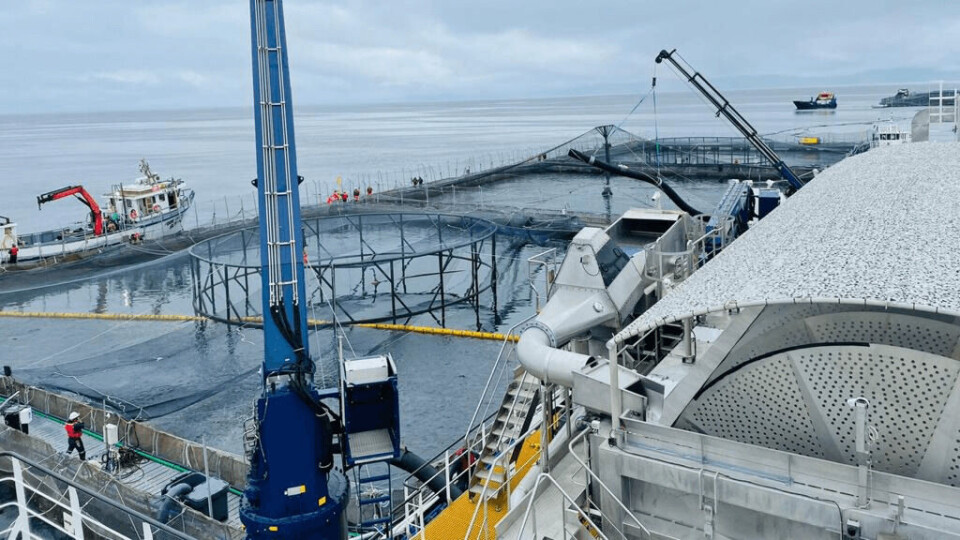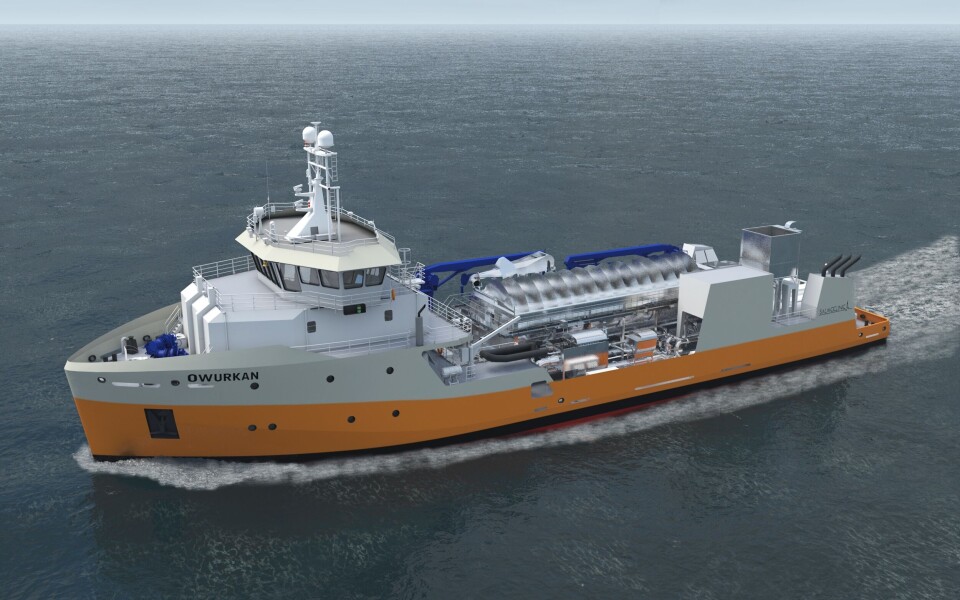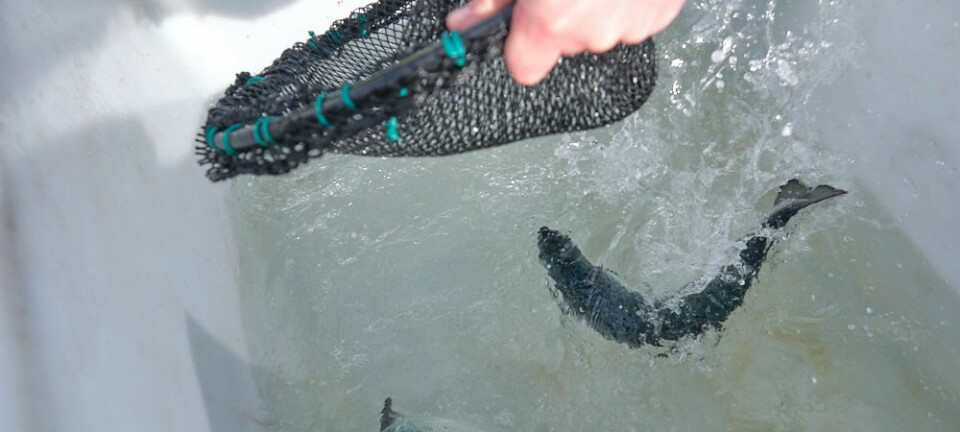
Impressive results for ‘helix’ delousing vessel in Chile
A novel method of removing lice from farmed salmon has been shown to eliminate more than 97% of adult stages of the Chilean louse, Caligus rogercresseyi, when tested with salmon farmer Salmones Camanchaca.
The company SalmoClinic, founded by Patagonia Wellboat director Hans Kossmann, uses a tank with a large helix to provide a continuous swim-through freshwater bath treatment for salmon pumped aboard its tailor-made treatment vessel, the 62-metre Owurkan.
The helix tank was manufactured by Norwegian company Stranda Prolog and is based on its pilot HeliXir System.

Freshwater treatment
The Owurkan is also equipped with a reverse osmosis system that can produce 125 m³m per hour of fresh water for use in freshwater treatments against gill disease.
“The first tests with Salmones Camanchaca were carried out at the end of February of this year with fresh water (<0.4 ppt salinity), to control multi-causal gill problems that affected a cage in a farm in Los Lagos region,” Kossmann told Fish Farming Expert’s Chilean sister site, Salmonexpert.cl.
“After confirming the successful result of this test, the entire site was treated in the first fortnight of April.”
Adult Caligus
Kossman said results have been very promising, highlighting the positive impact of the use of fresh water without any chemicals for the control of complex conditions that affect the gills of the fish (due to amoebas, bacteria and/or microalgae), “allowing the salmonids to quickly recover their respiratory capacity in order to resume normal feeding and growth”.
Likewise, freshwater treatments demonstrated a high efficacy for the elimination of adult stages of Caligus, above 97%, said Kossman.
Improvement
Camanchaca’s animal health and welfare deputy manager, Francisco Vallejos, said: “We have validated the ship from the point of view of animal welfare, and thus, we maintain close contact with the SalmoClinic team for the continuous improvement of the ship’s operation, identifying critical points and resolving them as soon as possible. We have [also] set out to optimise treatment times, so that it becomes a cost-effective therapeutic tool.”
The quality of the treatment water is permanently monitored online to maintain optimal conditions for the fish, keeping the levels of oxygen, CO₂ and pH controlled to avoid any physiological stress.
In the case of lice treatments, the parasites detached from the fish are collected in various mechanical filtration systems, while for treatments against gill amoeba, the detached amoebas are inactivated by applying a strong dose of UV rays.























































